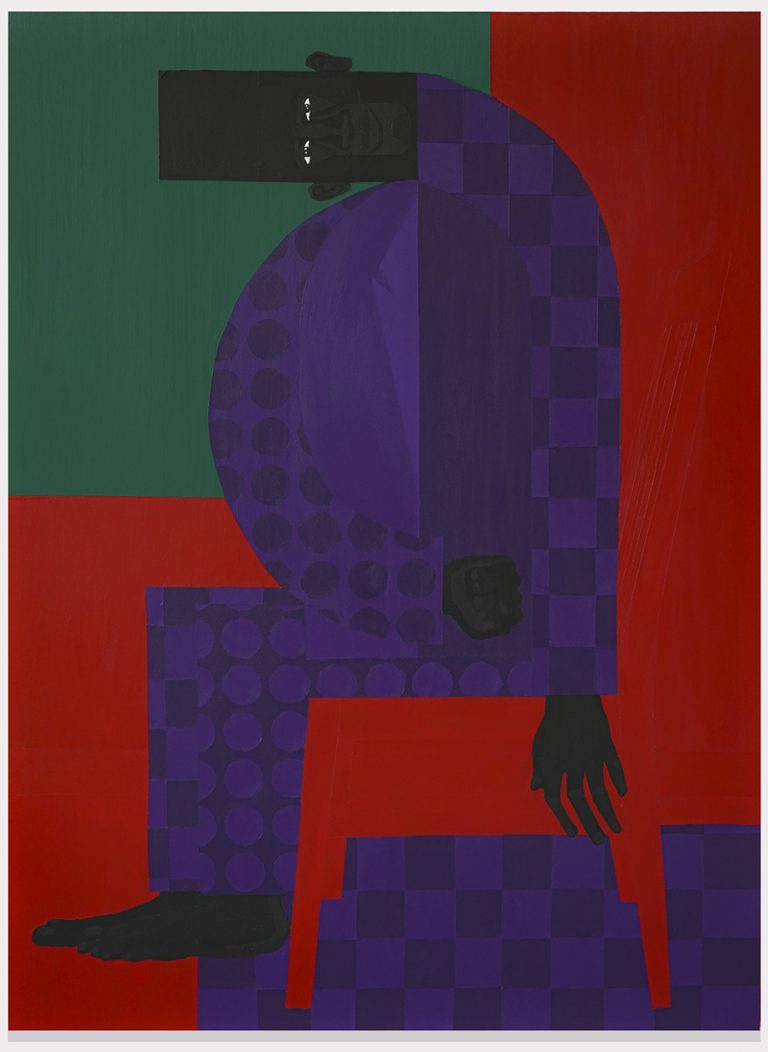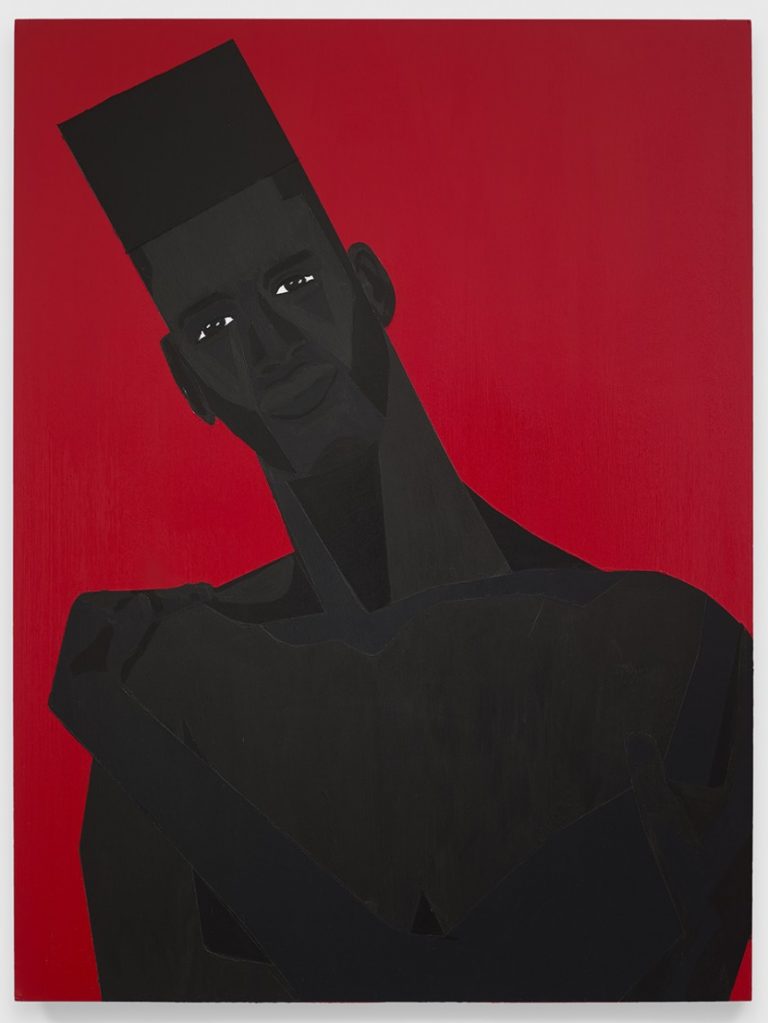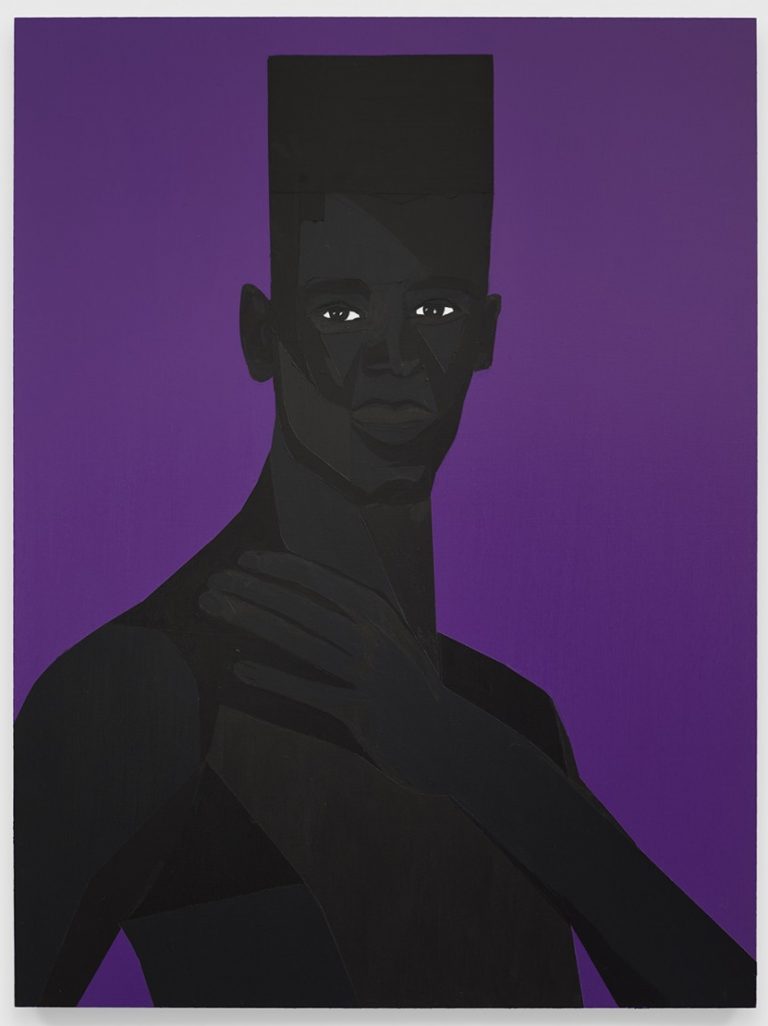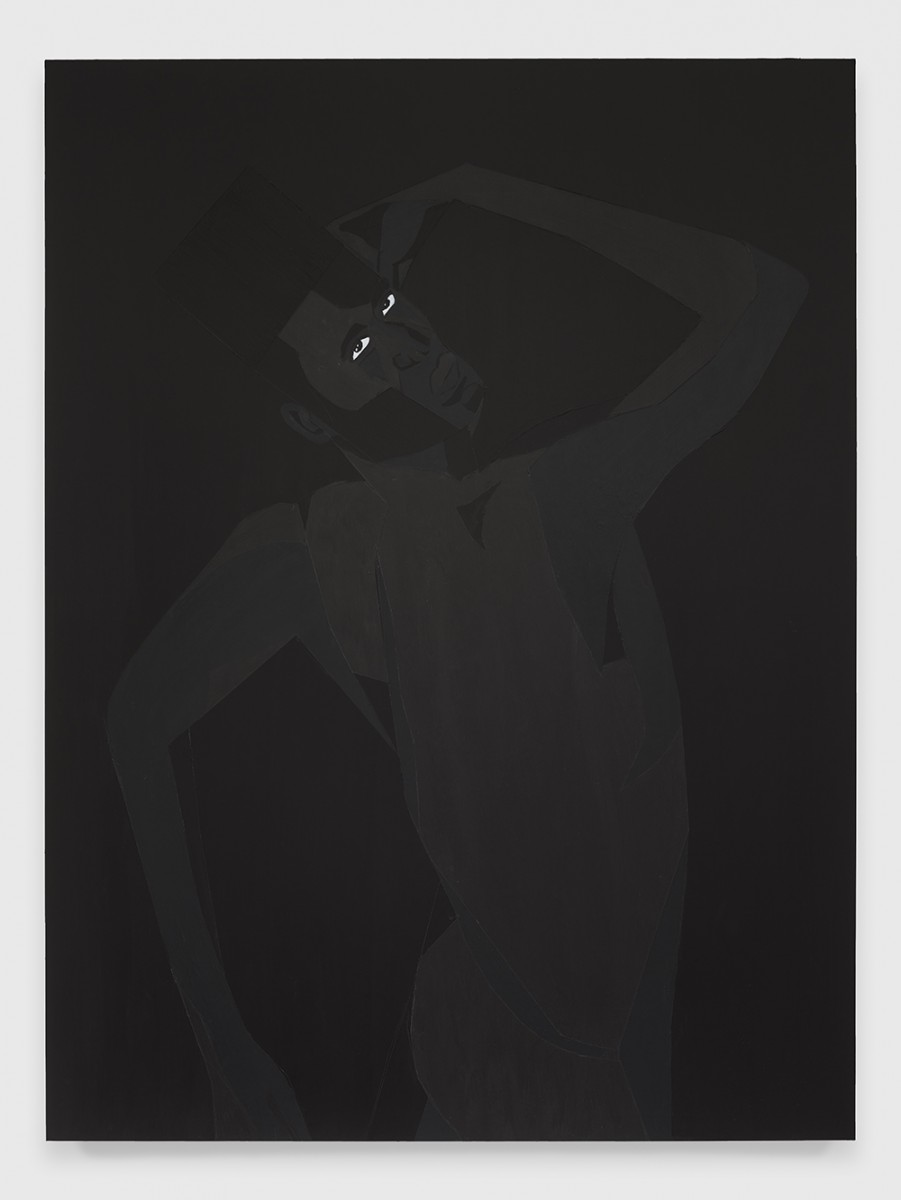
Jarrett and Jon Key in conversation with Steve Turner
Steve:
Seale(d), your two-person exhibition is soon to open and the title could not be more perfect. I understand that it is based on the name of the small town in which you grew up–Seale, Alabama. Please describe your experiences there, the only children in your family, twins, born minutes apart, and living together until you both left Seale to go to different colleges in Providence, Rhode Island when you were eighteen years old.
Jarrett:
Jon and I are fraternal twins! As kids we looked very similar, almost identical. Even I get us confused in old pictures. Now, Jon and I look really different, at least to me. Growing up, I realized how lucky I was to have a best friend built into my life. We both always had someone to play with! When we were in second or third grade, Jon and I used to make homemade horror videos in my parent’s bedroom with the family camcorder. I would say that was our first artistic collaboration.
Jon:
Also, our mom, Linda, encouraged Jarrett and me to use the arts as a fun activity to pass time and to express ourselves. She would set up an arts and crafts table in the kitchen with paints, glue sticks, glitter, construction paper and more. I look back on these times with great fondness and realize now how much I loved making things then, so much so, that it defined the course of my life.
Jarrett:
To be honest, music was my first love. I guess really for both of us. We were introduced to the recorder, then the piano, then I studied flute and Jon the trumpet. In high school, we were both in the band, Jon having switched to sax by then. We both sang in choir and performed in theater shows. I definitely took it a little bit more seriously than did Jon. I was in vocal competitions and piano recitals, and was really preparing for what I thought would be a career as an opera singer!
Jon:
We were very involved with all kinds of art, from music to theater to church pageants. I see this in our respective practices now. For me, I think the rise of a personal computer and the internet was very significant. When I was around ten years old my mom brought home an HTML book. One of her co-workers wanted us to have it. I immediately latched onto the idea that text and coding language could translate to interactive visual experiences. I would spend hours and hours learning early versions of CSS and HTML, building graphics and animations for my website projects. By high school, I had taken some online college courses in java and also taught myself how to paint in oil and acrylic. I was chatting with an upperclassman, applying to art school, and flipped through her copy of the student prospectus for SCAD. I landed on the graphic design pages that had all of these objects that I was already creating: websites, posters, and illustrations. I didn’t realize this is something you could go to college for, or more so that you could have a career in it. This is when I switched all my focus in high school to art. I convinced my high school art teacher to tutor me after school so I could complete the foundational art class assignments in oil painting and drawing.
Steve:
It sounds like you had a lot of encouragement at home. And it is interesting to see how each of you has developed your practices based on these early experiences. Before talking about art, I want to talk more about Alabama and the impact of growing up in the South.
One of my favorite books is Isabel Wilkerson’s The Warmth of Other Suns: The Epic Story of America's Great Migration which describes the migration of six million African Americans out of the South between 1915 and 1970. I am always interested in the stories of those who chose to remain in the South. Can you describe your family’s life in Alabama? What do you know of your family history? How do your experiences of growing up in Alabama inform your studio practices? Do you still feel Southern now that you live in Providence and Brooklyn respectively?
Jarrett:
We grew up on an acre of land bequeathed to my father from his father at the corner of a large pasture. My grandfather lived at the other end of this pasture. Growing up, cows filled the land between us. I remember Jon and I running through flocks of chickens as we avoided the morning cow pies.
Upon sharing some of my recent blacksmithed hot combs with my dad, he asked if I knew that this skill ran in the family. “Your grandfather did the same work.” I was shocked. I was initially drawn to creating hot combs from sayings my grandmother, my mom’s mom shared. She forever said, “Your hair is your strength. Don’t cut your hair!” This message comes from the Samson and Delilah story in the Bible. My grandmother straightened her hair with a hot comb her entire life. She had long, beautiful, black hair. I began making the hot combs as a way to think through her life more, specifically through an object, one that had so much meaning for her.
It is so amazing that the labor familiar to my paternal grandfather is helping me share my maternal grandmother’s story. What a surprising bridge of two families!
Jon:
Our father is a construction worker, so from a very young age we were used to being on his job sites discussing the plans for a future home. We would walk through the skeletal rooms imagining how some future family might inhabit and decorate the house. Our mother is a project manager for a big financial company and she also helped my dad run the construction business, doing taxes, payroll and house cleaning at the new homes and apartments. Jarrett and I would also help clean the homes and do final paint touch-up. Every summer, from the 7th through 12th grades, we were expected to work with my dad.
Most of our family still lives in the South. They live in Alabama, Mississippi and Georgia. Regardless of my current location, I definitely still feel Southern. I think about this a lot in my work. The mannerisms and etiquette that I learned as a child are still with me today. I still expect houses to have yards and built-in air conditioners, things that you don't get in New York.
Jarrett:
I definitely feel Southern no matter where I am. Some values stick. I can’t help smiling at a stranger, holding the door for someone older than I. Scenes from childhood–beautiful Alabama pastures and woods full of pine trees–still inspire my work. Also, if you ever want grits in Providence, I always have some!

Steve:
I am impressed at how quickly you both developed what I believe to be very mature studio practices and works.
Jon: What were your educational experiences like at RISD?
And, Jarrett, what did you learn at Brown and later RISD?
Jon:
RISD was a very amazing experience in some ways and a rather difficult one in other ways. Like many RISD students I applied with Graphic Design in mind, but when I arrived I was torn between painting, illustration and apparel.
I settled on Graphic Design after taking a six week long “winter-session” course in Apparel. I loved learning and developing my own skills and new techniques, but much of the education pedagogy and faculty excluded any representations that intersected with my identity. The school at that point had not yet started discussing diversity and inclusion and my class numbers reflected the disparity of representation. Conversations around identity and personal history met deaf ears and muted voices in crits. But I used this as an opportunity to examine what I cared about and delved into my own personal history.
Jarrett:
When I got to Brown I quickly let go of the dream of being the “Queer Tenor from the South”. Instead I focused my time building interdisciplinary performances with a company of students, while producing opera and directing plays. Brown is where I built the framework for working collaboratively with a group of people. We wrote songs, developed scenes, designed sets, choreographed dances, learned acrobatics and West African dance. At Brown, I learned how to build a vision and collaborate with folks to realize it across disciplines!
RISD is a perfect place to learn skills. I came to RISD to push my painting practice, while learning new ways to build sculptural objects with metal and cement! I also wanted to get better at apparel construction! RISD was a great place for me to experiment with materials and build new bodies of work. Since graduating from RISD, I have started a residency at The Steel Yard in Providence, where I’m forging more hot combs with the help of Steven KP (Kaplan-Pistiner)! I was worried that when I graduated RISD, I wouldn’t have access to a foundry and tools! So it’s amazing that I’ve been able to continue developing my blacksmithing skills in the same city.
Steve:
I think it is interesting how both of you have focused so much on innovation. Both of you make works that are distinctive. When one sees a painting by Jon, it is clearly a Jon Key painting. When one sees a steel hot comb or a painting on cement by Jarrett, it clearly is a Jarrett Key work. Was this something that was encouraged in school? Or was that your own objective, something you learned in Seale and that you advanced after you moved to Providence?
Jon:
I started writing about my personal narrative for my thesis project at RISD in 2013. I developed ideas then that are the foundation of the work I make now. I was wondering what my voice could bring to the graphic design world. What did it mean that I was from Alabama, that I was a queer and that I was Black? Could there be a visual vocabulary to unite these sources? Would it matter? This is when I clearly identified the four themes of my work, and to represent them, I created an artist book with text and collage using photographs from family photo albums. After graduating and moving to Brooklyn, I revisited the writing in an effort to create a specific visual vocabulary. I assigned a color to each theme and continued to delve into my own family history and memories.
In creating the queer mythology surrounding the Man in the Violet Suit, I wanted the figure to be comprised of bold, rich colors that historically relate to royalty and power. I also drew from art history and tales from the bible that I learned as a child. I drew from the queer ancient poet Sappho who wrote of lovers draped in violet robes and Joseph who wore a multicolored robe.
Jarrett:
I appreciate that! In my art practice, I’m focused on the authenticity of my own voice. I’m often asking myself, “but why this color, why this medium, why this form?” It’s important to me that I really feel that the objects I’m making reflect the story/statement I’m sharing - wholly. Not just the image, not just the material. Each mark, each gesture, color, carving is a signature of who I am and my experience and practice. In that way, I don’t think anyone else could make this work. RISD definitely pushed me to consider the “objectness” of the works that I make. My dad always said you can do anything, but be the best. I realized my best work happens when I follow my own intuition. My grandmother saying, “your hair is your strength” reminds me that my power and agency come from within. If I trust in my body, I am free.
Steve:
I also wonder who you want to see and appreciate your work? While each creates works that reflect your respective identities and experiences, I believe that you have made objects that transcend your particular stories and that have a material resonance and an open-endedness that is more universal. Is that a conscious objective?
Jon:
I think a lot about viewers interacting with my work. Of course I want many Black Queer and Trans people to experience it, but I also believe it can impact anyone. I love how people decipher the codes and messages with their own memories and myths. I have heard so many interpretations of the figure and its position: “I completely understand how this character feels; I hate feeling trapped in a space where I don't want to be”; “I can imagine this is how people feel living in NYC with all the people around,” etc. There have been so many interesting interpretations and all seem to make sense.
Jarrett:
Absolutely, I believe that by sharing my narrative, one might learn empathy. I feel that is what art does, or can do. So I hope that anyone could appreciate the work. I don’t expect viewers to get every reference immediately. I don’t understand every reference in Renaissance paintings. But I do hope that viewers will seek meaning when they are in front of the work, confront things that are clear or elusive. Maybe they will ask the person next to them (in a pre-covid world) what they think. I expect each person’s experience will be different.
Steve:
Let’s turn to this show. Each of you has made new works specifically for Seale(d). Can you describe what you are showing?
Jon:
I am continuing to expand The Man and the Man in the Violet Suit series. In The Man in the Violet Suit No.15 (Living Room), for the first time, I have depicted an interior space, specifically a couch modeled after the one in my living room in Brooklyn. Our living rooms are private to the outer world yet they are a public space within the home. I like this paradox. In the background, my grandmother “Polka Dot” watches over the scene.
The Man series seeks to address who I am when stripped away from any projected identities. How can I find freedom and liberation in my own skin? Is escape possible? The figure is stretching, posing, and readjusting for comfort. The smaller busts (No.11 and No.12), depict the figure touching and holding himself, referring to self-care and self-protection. The larger paintings (No. 13 and No.14) reveal more of the nude figure posturing and posing in against a black background. In the midst of so much chaos and the weak leadership, I wonder who we can count on? Perhaps our own bodies hold the answer. We descend from generations of fighters and survivors and our DNA is marked by perseverance and strength. This figure is confident and bold.
Jarrett:
I am showing three hot combs and four cement paintings. The hot combs are part of a new series of works that examines how the form of the tool can reflect its purpose or environment. The baseball bat base, the flat ribbon base, and the three foot base stand as familiar icons, as the bronze burnished finish guides the eye up and down the figure. The teeth in these Hot Combs are organic and unique to each comb. I was inspired by early drawings I did of the hot comb. Hot Comb No. 3 I’ve nicknamed “SnaggleTooth”. The more I make them and stand with them in space the more their teeth become specific smiles.
There are two small cement paintings featured in this show that represent the extremes of my painting practice in cement. Dipping a Toe holds the space for loose beautiful gestures as the trees stand in solidarity with the figure. Sunset with Jarrett really focuses on detail and I hadn’t done a landscape with me in a while. Warrior Sitting with the Flowers is a painting in response to an early cement painting called Sharina Sunbathing. I love these moments in the body of work where the figure feels as peaceful as a flower in a meadow. Reflection at Well highlights various parts of my art practice in one frame. A hot comb waits patiently as the Warrior takes a moment to look at themself in the water of a large well. The figure is dressed in a pleated vest and pants. This garment is one of a few couture pieces I’m creating to dress the folks in my paintings.
Steve:
This is the first time that the two of you will be presenting works together in a very public way. How do you feel about it? I also wonder if you know what your parents are thinking and feeling.
Jon:
This is a great time for us to show work together. I’m so inspired seeing Jarrett grow and expand their practice over the past few years. I remember our first New York show taking place in Jarrett’s old Brooklyn apartment in 2014. We were so eager to share our creations with our friends. It's extraordinary to see what we both have accomplished in this short time.
I think our parents are very proud of us. I know at the beginning when they first realized they have queer artist kids they were a bit…. Shocked! But now I think they are impressed by our hard work and perseverance.
Jarrett:
I’m excited! It’s nice to do a show with Jon where we can have our work in conversation with each other. There are two different voices and two different stories, and yet the stories complement each other. Jon and I do a lot of harmonizing when we sing together. I feel like this show offers a taste of our harmony in a visual way.
Steve:
I think we can also now make public that this is a prelude to your upcoming solo exhibitions which will take place in Los Angeles next April and May. Is there anything you want to share about that now?
Jon:
I am starting to include my chosen family in new works. Chosen family in the queer community refers to friends that become brothers and sisters, mentors that become parents. My chosen family has helped define me and support me as I was growing up these recent years. Having a community that truly accepts your most authentic and honest self is critical to self-acceptance and self-realization. So I am excited to further expand and share my universe.
Jarrett:
So many Hot Combs to come! They are getting larger, and more intricate. I’m excited to share a family of combs.
Steve:
Congratulations! I am certain that you both will bring honor to Seale, Alabama.

Steve Turner is pleased to present Seale(d), a two-person online exhibition featuring new works by Providence-based Jarrett Key and Brooklyn-based Jon Key, twin brothers who grew up in the small town of Seale, Alabama. Jarrett is presenting three new oversized hot combs that they forged in steel alongside four oil-on-cement fresco paintings that depict figures within a pastoral landscape. In both bodies of work, Jarrett has drawn upon family lore and biography to construct works using material, labor, craft and skill that are significant to their family history. Jon is presenting five new paintings in his signature graphic style, one which relies primarily on the use of red, green, violet and black to represent his family, his Southern-ness, Queerness and Blackness. While both artists use symbolism to convey content and both are inspired by their origin in Seale, they very clearly have different voices and stories. Yet, as Jarrett noted: “Jon and I do a lot of harmonizing when we sing together. I feel like this show offers a taste of our harmony in a visual way.”
Jarrett Key (born 1990, Seale, Alabama) earned a BA at Brown University (2013) and an MFA at Rhode Island School of Design (2020). They have exhibited work in group exhibitions at NXTHVN, New Haven (2020); Fierman Gallery, New York (2020); 1969 Gallery, New York (2020) and will have a solo exhibition at Steve Turner, Los Angeles in 2021.
Jon Key (born 1990, Seale, Alabama) earned a BFA at Rhode Island School of Design (2013) before moving to Brooklyn where he began developing his studio and design practices. He has had solo and two-person exhibitions at Steve Turner, Los Angeles (2019); Rubber Factory, New York (2019) and The Armory Show, New York (2020). He will have his second solo exhibition at Steve Turner in 2021.
Please direct inquiries to
steve@steveturner.la
jonathan@steveturner.la



















